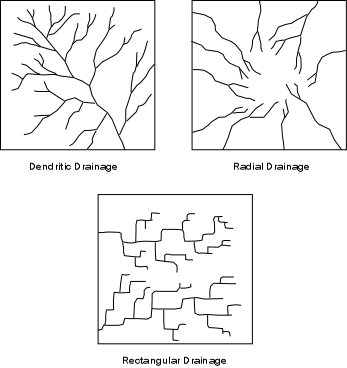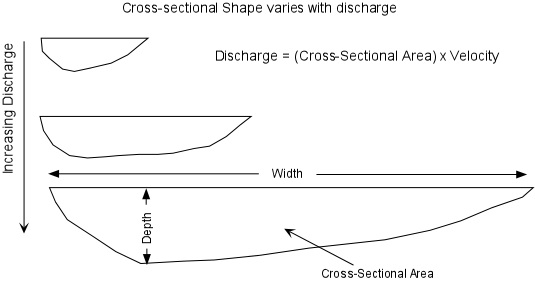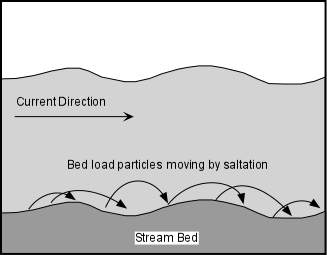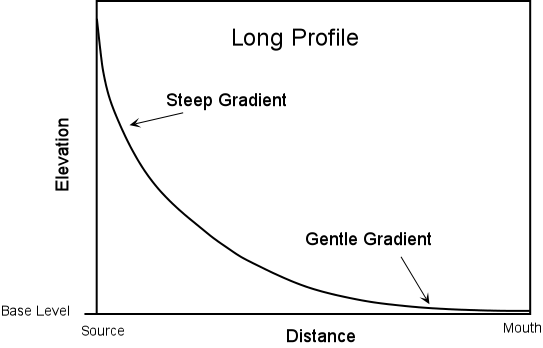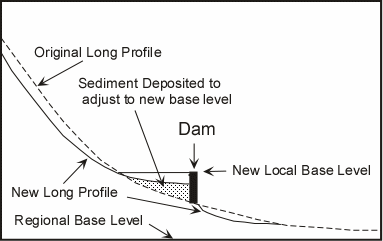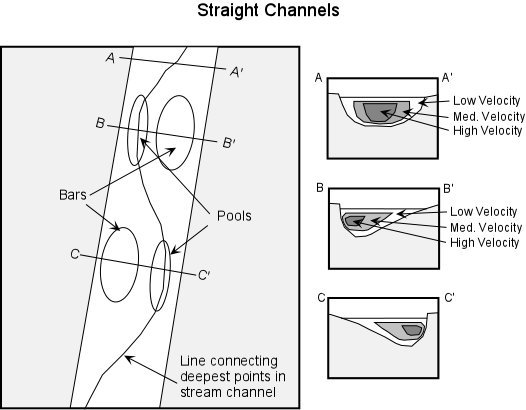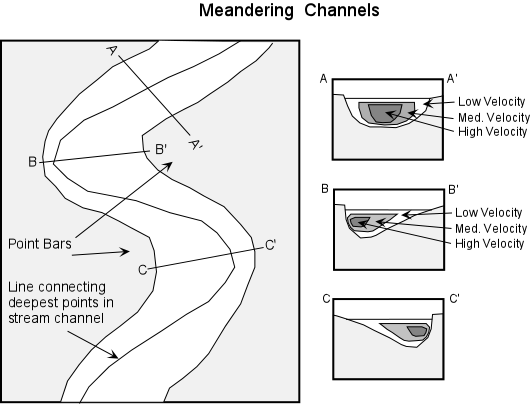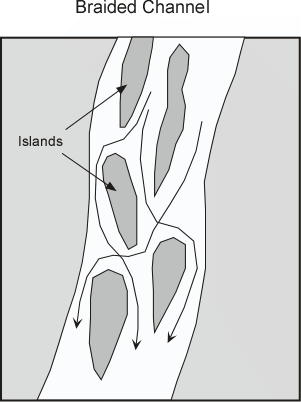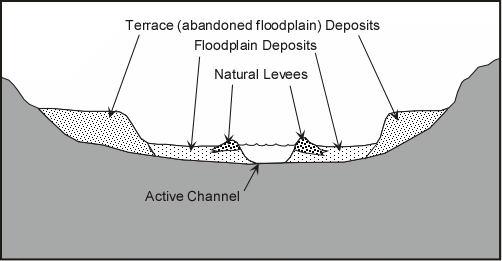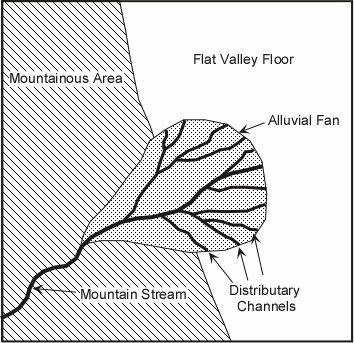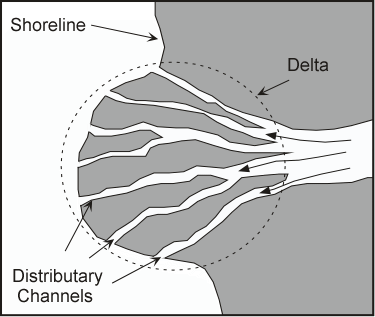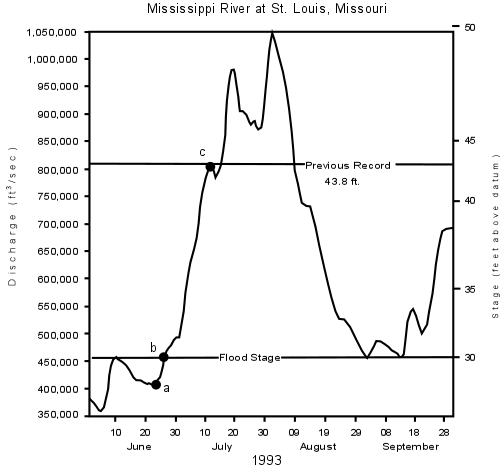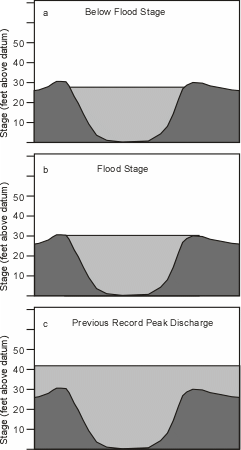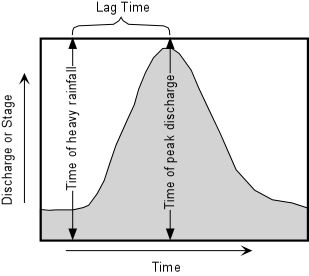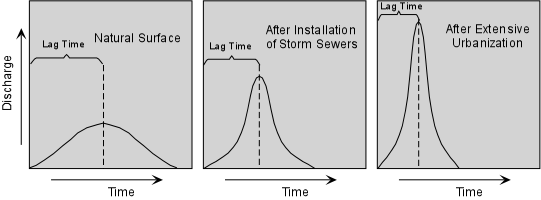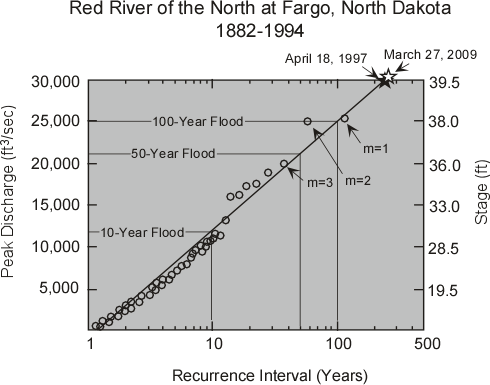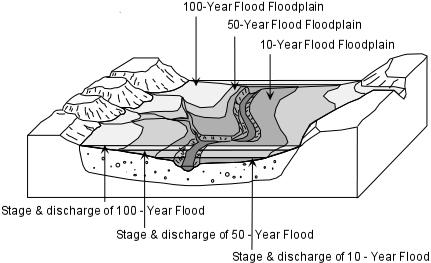Geometry and Dynamics of Stream Channels
Discharge
The stream channel is the conduit for water being carried by the stream. The stream can
continually adjust its channel shape and path as the amount of water passing through the
channel changes. The volume of water passing any point on a stream is called
the discharge. Discharge is measured in units of volume/time (m3/sec or ft3/sec).
Q = A x V
Discharge (m3/sec) = Cross-sectional Area [width x average
depth] (m2)
x Average Velocity (m/sec).
As the amount of water in a stream increases, the stream must adjust its velocity
and cross sectional area in order to form a balance. Discharge increases as more water is
added through rainfall, tributary streams, or from groundwater seeping into the stream. As
discharge increases, generally width, depth, and velocity of the stream also increase.
Velocity
A stream's velocity depends on position in the stream channel,
irregularities in the stream channel caused by resistant rock, and stream gradient. Friction slows water along channel edges. Friction is greater in wider, shallower streams and less in narrower, deeper streams.
In straight channels, highest velocity is in the center. In curved channels,The maximum velocity traces the outside curve where the channel is preferentially scoured and deepened. On the inside of the curve were the velocity is lower, deposition of sediment occurs. The deepest part of the channel is called the thalweg, which meanders with the curve the of the stream. Flow around curves follows a spiral path.
Stream flow can be either laminar, in which all water molecules travel along
similar parallel paths, or turbulent, in which individual particles take irregular paths.
Stream flow is characteristically turbulent. This is chaotic and erratic, with abundant mixing, swirling eddies, and sometimes high velocity.
Turbulence is caused by flow obstructions and shear in the water.
Turbulent eddies scour
the channel bed, and can keep sediment in suspension longer than laminar flow and thus aids in
erosion of the stream bottom.
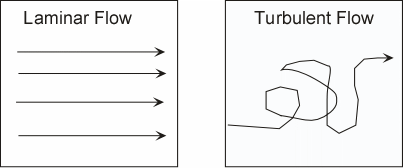
Cross Sectional Shape
Cross-sectional shape varies with position in the stream, and discharge. The
deepest part of channel occurs where the stream velocity is the highest. Both width
and depth increase downstream because discharge increases downstream. As discharge
increases the cross sectional shape will change, with the stream becoming deeper and
wider. |
